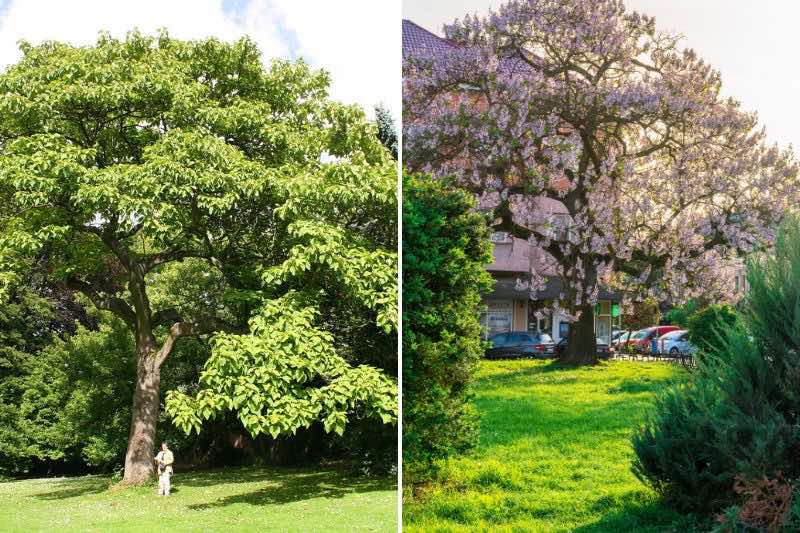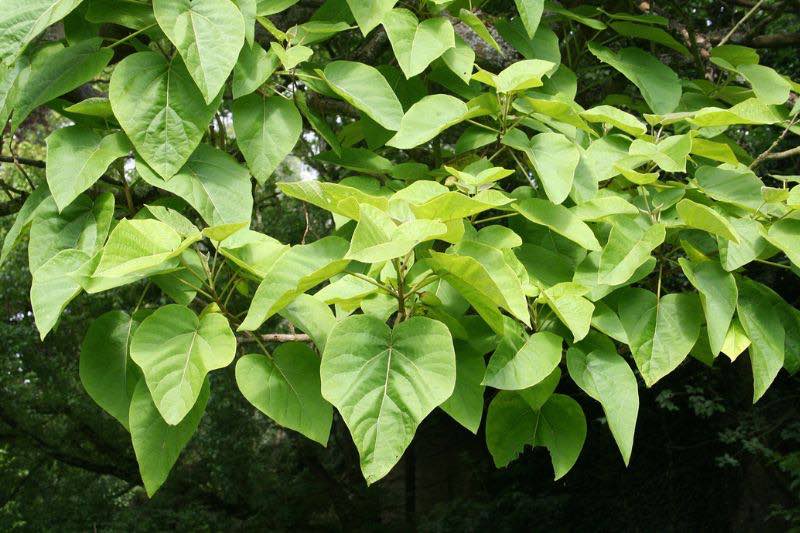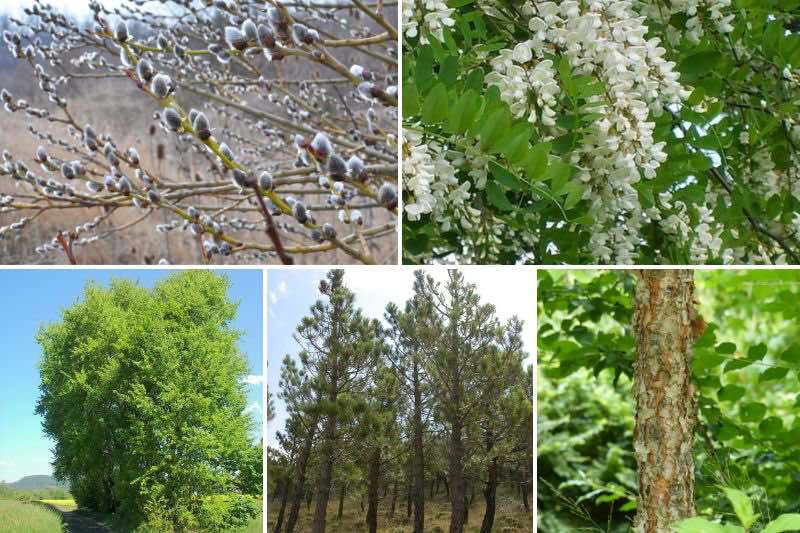In an increasingly environmentally conscious world, efforts are being made to develop more sustainable agricultural systems. One of the ways we seek to achieve this goal is through permaculture - a holistic approach to agriculture that aims to work with nature rather than against it. Among the many questions that arise, one often comes up: what are the best trees to use in these systems? Among them, the Paulownia - a robust and fast-growing tree native to Asia - is of particular interest. Its resilience, ability to improve soil quality, and rapid growth indeed make Paulownia a promising candidate to become "the tree of the future" for permaculturists. But is this really the case? We will find out.

What is this tree?
The Paulownia tomentosa, often referred to as "the emperor tree", is a tree species native to Asia, known for its rapid growth and spectacular fragrant flowers. This giant, which can reach heights of 15 to 25 metres, not only has undeniable aesthetic appeal but also significant ecological value. Its ability to fix nitrogen in the soil, resist diseases and pests, and thrive in various soil and climate conditions has made it a popular choice for many reforestation and permaculture projects. Furthermore, Paulownia wood is lightweight, strong, and of high quality, making it a valuable resource for the timber industry. Therefore, Paulownia is increasingly recognised as a tree with immense potential to contribute to a more sustainable future.
Nota bene: there are 6 species in the genus Paulownia, but the most commonly cultivated are Paulownia tomentosa and Paulownia fortunei. The latter is distinguished from the Emperor Tree by its earlier flowering, but retains the same qualities.
Paulownia has many advantages
In the context of permaculture, Paulownia presents several notable advantages that make it interesting for sustainable agriculture projects:
- Rapid growth: Paulownia is one of the fastest-growing trees in the world. In just a few years, it can reach several metres in height, which is particularly interesting for reforestation and permaculture projects that seek to establish a forest cover quickly.
- Soil improvement: Paulownia has the ability to fix nitrogen, an essential element for plant growth, in the soil. This ability contributes to the improvement of soil quality and fertility, which is crucial in a permaculture system. The nutrient-rich leaves decompose quickly in the soil or compost, which is an additional asset.
- Resistance: These are robust trees that can withstand a wide range of climatic conditions and soil qualities. They are also resistant to diseases and pest attacks.
- High wood yield: Paulownia wood is lightweight, strong, and of high quality. It can be used for a variety of products, including furniture, musical instruments, and construction wood. It is also a species that can be used for biomass production due to its rapid growth.
- Carbon storage: Thanks to its rapid growth, Paulownia is capable of sequestering a large amount of CO2, making it an important asset in the fight against climate change.
- Shade tree and support for climbing plants: Paulownia quickly becomes an excellent shade tree, but its straight and sturdy stems can also serve as support for climbing plants. It is worth noting that the Emperor Tree is also excellent in a windbreak hedge.

A concrete example of using Paulownia in permaculture
The use of Paulownia as a "windbreak" is one of the most common examples in permaculture. Due to its rapid growth, it can provide a protective barrier against strong winds for more delicate plants or livestock. Its dense foliage can help reduce soil erosion caused by wind while retaining more moisture in the soil, which is beneficial for other plants in the system.
Moreover, Paulownia produces a large amount of biomass in a short period, which can be useful for producing mulch or compost. Its leaves are nutrient-rich and can help improve soil quality when they fall and decompose.
Can Paulownia impact local biodiversity?
Paulownia is an exotic and pioneering species. Beware of its potentially invasive character!
Paulownia is indeed a fast-growing species, which can make it competitive with local species. If its spread is not controlled, it may eventually dominate a landscape, reducing the diversity of native tree species.
Furthermore, although Paulownia can provide habitat for certain species of insects, birds, or small mammals, it is not always suitable for local wildlife. Most insects, for example, have co-evolved with specific plant species. If Paulownia replaces these trees, these animals will lose their natural habitat.
That said, it is also possible that Paulownia may have beneficial effects on local biodiversity. Its flowers attract and nourish many pollinators, and its nutrient-rich leaves can improve soil fertility when they fall and decompose.
However, it is important to keep in mind that, in general, the introduction of non-native species should be done with caution, as they can have unforeseen and potentially negative impacts on local ecosystems. It is preferable to plant native species whenever possible, as they are often in harmony with local flora and fauna.
The particular case of pioneer trees
Paulownia tomentosa and Paulownia fortunei are not the only trees that multiply some of the advantages mentioned earlier. This is the case for many so-called pioneer trees, such as Aspen, birches, Pinus pinaster, Goat willow, or Black locust. Pioneer trees are tree species that are among the first to colonise disturbed or degraded lands. They play a crucial role in restoring ecosystems, as they help stabilise the soil, improve its fertility, and prepare the ground for the arrival of other plant species. Pioneer trees are generally characterised by rapid growth, a great ability to spread by seeds, and a capacity to tolerate difficult environmental conditions, such as poor soil or extreme temperature and humidity conditions.
































Comments